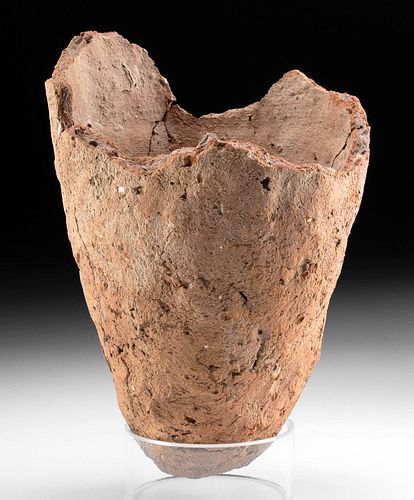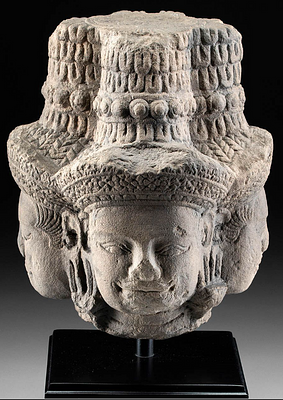Exhibited Egyptian Old Kingdom Terracotta Bread Mold
Lot 5a
About Seller
Artemis Fine Arts
686 S Taylor Ave, Ste 106
Louisville, CO 80027
United States
Selling antiquities, ancient and ethnographic art online since 1993, Artemis Gallery specializes in Classical Antiquities (Egyptian, Greek, Roman, Near Eastern), Asian, Pre-Columbian, African / Tribal / Oceanographic art. Our extensive inventory includes pottery, stone, metal, wood, glass and textil...Read more
Categories
Estimate:
$2,000 - $3,000
Absentee vs Live bid
Two ways to bid:
- Leave a max absentee bid and the platform will bid on your behalf up to your maximum bid during the live auction.
- Bid live during the auction and your bids will be submitted real-time to the auctioneer.
Bid Increments
| Price | Bid Increment |
|---|---|
| $0 | $25 |
| $300 | $50 |
| $1,000 | $100 |
| $2,000 | $250 |
| $5,000 | $500 |
| $10,000 | $1,000 |
| $20,000 | $2,500 |
| $50,000 | $5,000 |
| $100,000 | $10,000 |
| $200,000 | $20,000 |
About Auction
By Artemis Fine Arts
Jun 29, 2023
Set Reminder
2023-06-29 10:00:00
2023-06-29 10:00:00
America/New_York
Bidsquare
Bidsquare : Exceptional Antiquities, Ethnographic and Fine Art
https://www.bidsquare.com/auctions/artemis-gallery/exceptional-antiquities-ethnographic-and-fine-art-13031
Artemis Fine Arts info@artemisgallery.com
Artemis Fine Arts info@artemisgallery.com
- Lot Description
Ancient Egypt, Old Kingdom, 3rd to 6th Dynasty, ca. 2686 to 2181 BCE. A hand-built terracotta bread mold of conical form bearing a natural russet hue across its surfaces. Egyptian bakers would first place their dough-filled molds into an oven for baking and then, once removed, break the molds open to remove the foodstuff. Technological advancements in the Middle Kingdom enabled bakers to remove bread without destroying the mold, so the repaired nature of this older example suggests it was found in its fragmentary state in situ and reassembled in modern times. Size: 5.25" W x 7.625" H (13.3 cm x 19.4 cm); 7.875" H (20 cm) on included custom stand.
Exhibited in the Robert and Frances Fullerton Museum of Art (RAFFMA), California State University, San Bernardino from 1998 to 2023, reference number EL01.053.1998
Provenance: Collection of Dr. W. Benson Harer, Los Angeles, California, USA, acquired in 1974; Exhibited in the Robert and Frances Fullerton Museum of Art (RAFFMA), California State University, San Bernardino from 1998 to 2023, reference number EL01.053.1998
All items legal to buy/sell under U.S. Statute covering cultural patrimony Code 2600, CHAPTER 14, and are guaranteed to be as described or your money back.
A Certificate of Authenticity will accompany all winning bids.
We ship worldwide and handle all shipping in-house for your convenience.
#179006Fragment of a larger mold; repaired with chips and adhesive residue along break lines. Chips to rim and body, with expected pitting, and some stable hairline fissures stemming from repaired areas, otherwise in excellent condition. Great preservation to conical form.Condition
- Shipping Info
-
All shipping is handled in-house for your convenience. Your invoice from Artemis Gallery will include shipping calculation instructions. If in doubt, please inquire BEFORE bidding for estimated shipping costs for individual items.
-
- Buyer's Premium



 EUR
EUR CAD
CAD AUD
AUD GBP
GBP MXN
MXN HKD
HKD CNY
CNY MYR
MYR SEK
SEK SGD
SGD CHF
CHF THB
THB














